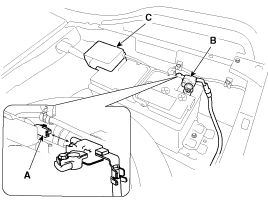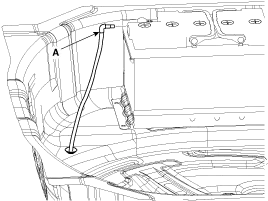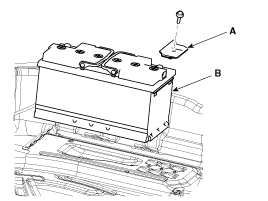Hyundai Genesis (DH): Charging System / Battery Repair procedures
Hyundai Genesis (DH) 2013-2016 Service Manual / Engine Electrical System / Charging System / Battery Repair procedures
| Removal |
| 1. |
Disconnect the battery sensor connector (A), battery negative terminal (B) and positive terminal (C).
|
| 2. |
Disconnect the vent hose connector (A) from the battery air vent hole.
|
| 3. |
Remove the mounting bracket (A) and then remove the battery (B).
|
| Installation |
| 1. |
Install in the reverse order of removal.
|




